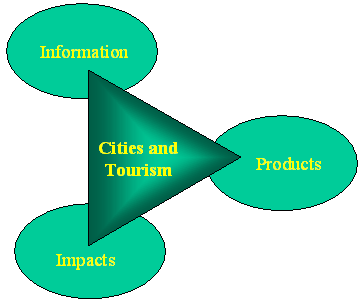Cities and Tourism
|
Cities face, therefore, a double challenge. Firstly, they have to be able to respond to the expectations and needs of the growing numbers of tourists who are attracted to their rich and varied array of cultural, business, entertainment, shopping, sports and other attractions; furthermore, they need to continuously renovate and improve such facilities in order to maintain their share in the competitive tourism market and the benefits resulting from it. Secondly, cities have to ensure that tourism is developed and managed in such a way that it benefits the resident population, does not contribute to the deterioration of the urban environment but rather to its enhancement, and does not become a financial burden to the local authority.
Some of the key stakeholders in urban tourism include:
-
Private Sector i.e. airlines, hotel chain operators and owners, tour
operators, credit card companies, tourist attraction operators (theme parks,
events etc.), real estate agencies;
- Public Sector i.e. city managers (from the historic city to the seaside resort), transportation planners, bus and train operators, information departments, economic development agencies, national parks, national tourist organisations;
- Touristic Institutions i.e. museums, art galleries, historic facilities (e.g. the national trust) and educational organisations.
 There are three key dimensions of tourism in cities and urban areas:
There are three key dimensions of tourism in cities and urban areas:
- Products - the anticipated changes necessary from tourist attraction providers; theme parks, operators of events (sports, shows, fairs), museums and hotels. What are their plans, how do they respond to the anticipated growth?
- Information - How does a city make itself more tourist friendly? What are the information systems available to tourists? How do tour operators deal with this growing demand? How to accumulate information on customer preferences and requirement, seasonal changes, age groups etc.? How to develop enduring attractions which will provide sustainable development? What information does the city provide in order to attract tourist attraction providers?
- Impacts - economic and development opportunities as well as the impact of tourism growth on sustainable development, transportation, cultural and environmental, social and economic aspects.
- Source:
- AIDE MEMOIRE - "TOURISM AND THE CITY: The challenge of sustainability"
from 10 to 12 November 1999 in Madrid, Spain
| Return to the Sustainable Tourism Gateway Contact: Hari Srinivas - hsrinivas@gdrc.org |